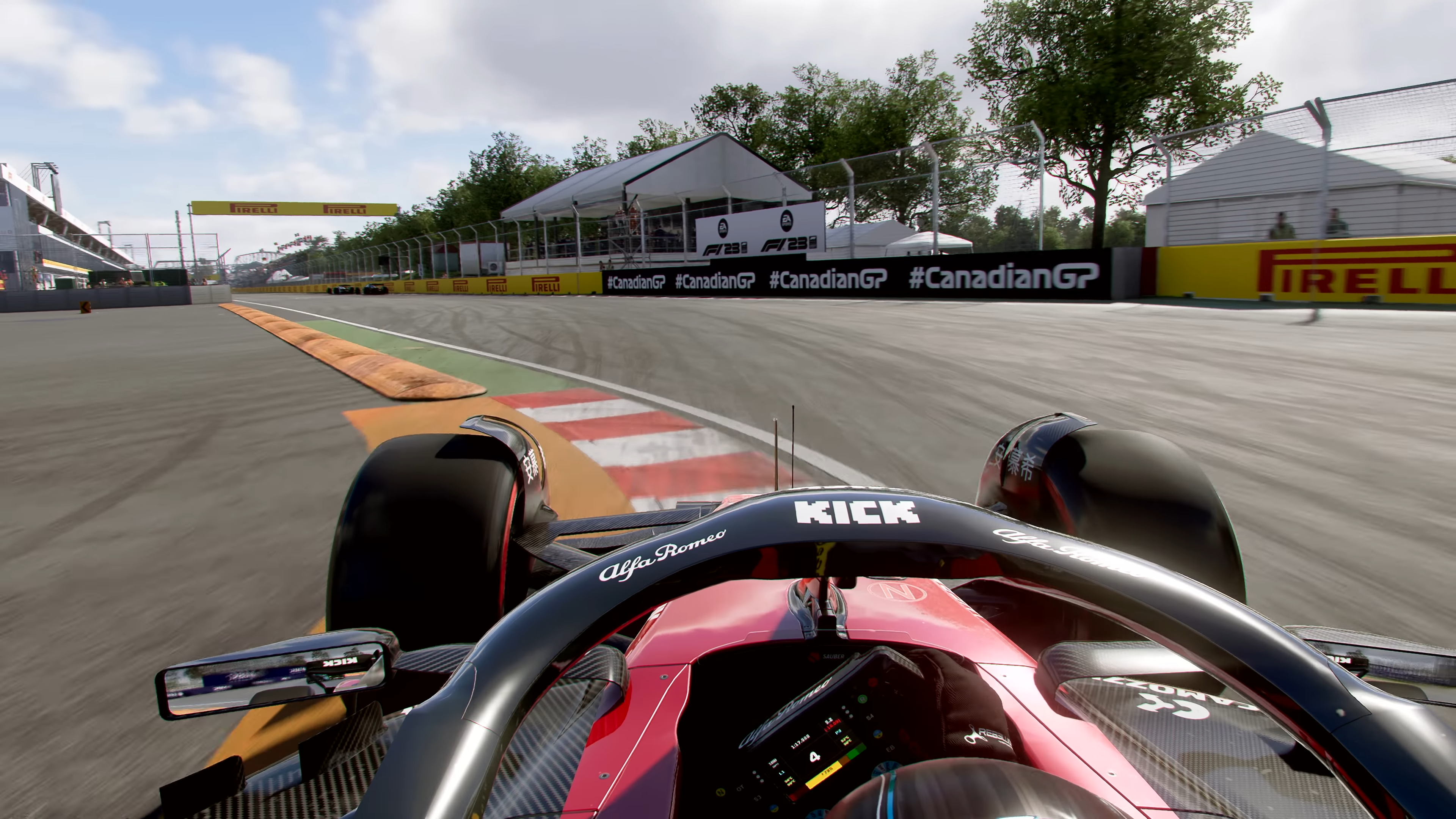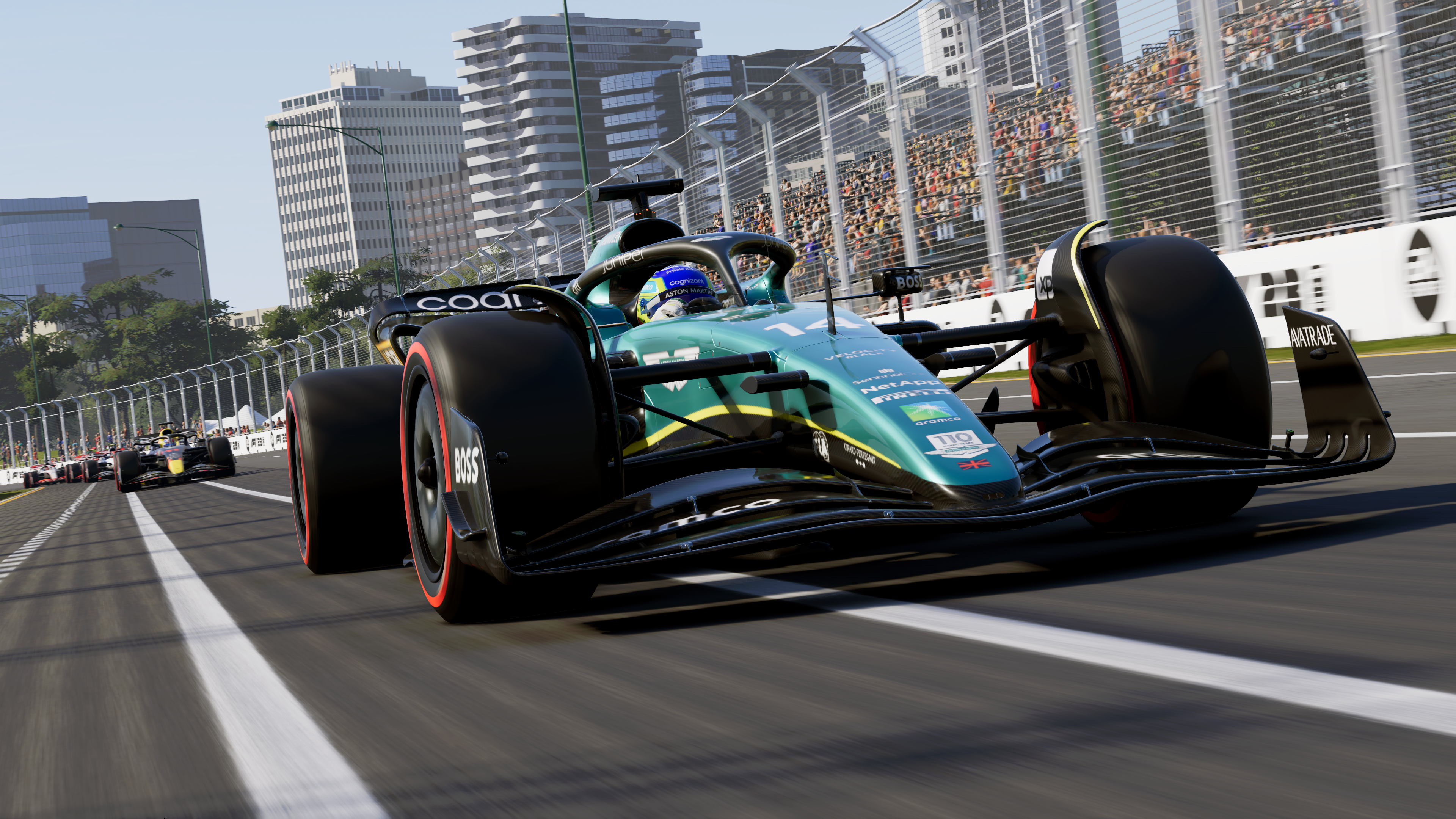As we head into the second year of F1’s new regulations (and another inevitably dominating performance by Max Verstappen), F1 23 brings the heat with Codemasters’ 15th entry into this annual motorsports series.
After big changes to the driving performance in F1 22, courtesy of the sport’s new focus on ground effect, this installment looks to work on these elements and add new content that players were demanding last year.
So, the questions are clear: what’s new? How do the cars drive with these improved physics and driving models? And do the new additions make this game feel fuller? Let’s get some first impressions.
Lights out, and away we go!

In my hands-on time, I’ve been able to get involved in some Grand Prix and time trial action, but I need to warn you about something. If you’re used to the more simulation-esque side of gameplay on F1 22, there are some changes here that you will have to get used to — or else you will either be too slow around the track or end up spinning off into a wall.
EA Sports has talked at length about the “significant upgrade” applied to handling and physics, and they will take some time to truly get the hang of. From the torque delivery through the car engine being refined for improved acceleration and more traction at low speeds, to the cerbs and rumble strips on track having a far more noticeable impact on a car’s driveability, there’s a lot to learn.

There are several smaller changes too, like the physics of how a car’s tire interacts with the track surface, and the aerodynamics of slipstreaming a car ahead. All of this adds to a grounded driving experience with more predictable vehicle behavior. Once you get into your flow with it, F1 23 feels a lot better than 22, but coming from the previous iteration, it takes a while to get your head around things.
Those who don’t have the space for a full racing wheel in their homes will see an improvement too, thanks to Precision Drive controller technology. EA’s wording around this has been sort of vague, so I’ll try to sum it up a little better. The only way I can describe it is to say that everything feels tighter in a way. Steering inputs can be a lot more finite for gentler corners, and the predictability of the car given to you through the
Gamer-friendly Grand Prix (mostly)

Two other big changes I got to muck about with were the addition of a 35% race distance and red flags. The former has only been seen in F1 Esports, and it gives you the perfect mix of a race that doesn’t take up your entire afternoon while giving you the requirement to do a pit stop — adding a tactical element to it all. I really appreciated this change!
The latter… Not so much. Of course, there are options to change how willing the FIA is to pull out a red flag, but at all levels, it does throw a race into disarray. I appreciate and understand the drama behind them in real-life and, in certain races, it did become a good reset for when the AI decided to fall into a huge multi-car pile up. But most of the time, I’d recommend keeping red flags off.
Accessible fidelity

One key thing that I noticed while playing F1 22 is that it can be a taxing game on any system. During my time with F1 23, you can push things even further with improved fidelity on certain textures and more ray tracing options, but the settings you can tweak make more of a positive impact if you have a less powerful machine.
A great example of this versatility comes when I put my super-old Asus ROG Zephyrus G15 through the ringer. Its 3rd gen AMD Ryzen 7 and GTX 1650 are rather outdated, and last year’s game would absolutely murder it. Now, thanks to the more substantial changes in the low graphical settings, I was confidently hitting 60 FPS at 1080p resolution.
Bumping it up to the Lenovo Legion Pro 7i (Gen 8) with RTX 4070, and you can make the most of that gorgeous ray tracing. Alongside that, DLSS 3.0 means you can get a noticeable bump in performance — up from the 62 FPS average I achieved on high and closing in on 100 FPS.
Racing at speeds of over 200 MPH with 19 other cars does mean that the AI frame generation’s typical artifacting around certain objects is much more noticeable, as scenery can even muck around with the on-screen UI elements at times. But there is no noticeable latency when activated, and if frame rate is everything, this is a great workaround.
Outlook

Just like any sports game franchise, the annual upgrade cycle means tweaks are small but impactful. The already grounded driving gameplay of F1 22 has been given a new level of thorough detail and feel, thanks to the improved handling and physics. And, on top of that, the Precision Drive controller technology makes F1 23 feel much more graceful when playing on a joypad.
It takes a while to get used to, and trust me when I say there will be some on-track frustrations because of the changes. But once it clicks (and after some small tweaks to steering sensitivity), it clicks hard and you’ll end up falling in love.
Presentation remains slick, the small changes to the in-car audio are a nice touch of additional realism, and with the increased depth in graphical settings to tweak, you can get this titlerunning nice and smooth with no problems.
Source link
 notebook.co.id informasi dan review notebook laptop tablet dan pc
notebook.co.id informasi dan review notebook laptop tablet dan pc